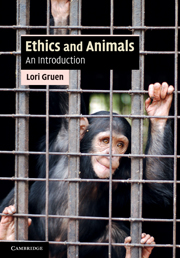3 - Eating animals
Published online by Cambridge University Press: 05 June 2012
Summary
It has often been said that if people were required to kill the animals they eat, they would become vegetarians. In one year, a household of four people in the United States eats approximately three-quarters of a cow, one and a third pigs, seventy chickens, and four turkeys. If they were to kill all these animals themselves, they would be slaughtering animals at least once a week (and would need a very large freezer). But it isn't only the use of time and space that might put people off eating other animals. The repulsion would come from having to look into an animal's eyes while yielding a knife and slitting her throat.
Most people don't have the time, space, or temperament to slaughter other animals to eat them, and they don't have to because large intensive slaughterhouses and processing plants exist to do the job for them. In the United States alone, these massive industrialized operations are capable of slaughtering and processing about ten billion animals annually, and the killing is designed to be swift and mechanical. In a single chicken slaughterhouse, for example, the birds are killed at a rate averaging 7,500 an hour, about two birds per second. The process involves shackling birds upside down by their feet from an overhead conveyor belt, dipping their heads into an electrified water tank to stun them, and then whizzing them past a sharp revolving blade that slices their necks.
- Type
- Chapter
- Information
- Ethics and AnimalsAn Introduction, pp. 76 - 104Publisher: Cambridge University PressPrint publication year: 2011



